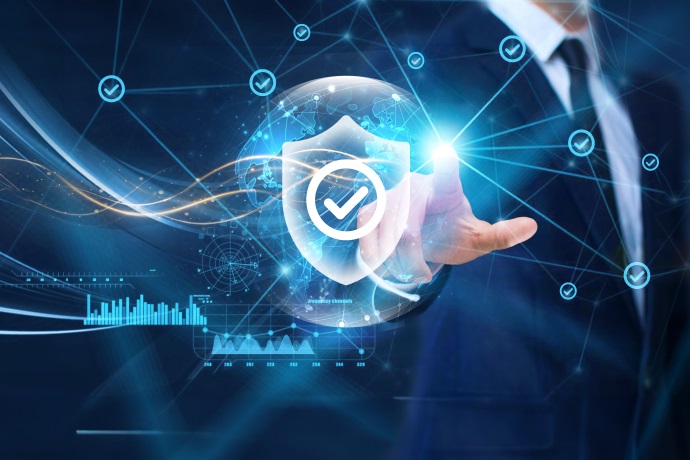How Managed Detection and Response Services Enhance Threat Detection and Incident Response

From malware and ransomware attacks to targeted phishing campaigns and insider threats, the digital landscape is rife with potential risks that can compromise sensitive data and disrupt operations. With cyber-attacks becoming increasingly frequent and sophisticated, organisations face a daunting challenge in defending against these evolving threats. To address these concerns, many organisations are turning to Managed Detection and Response services like Cyber Security Operations Center.
A Security Operations Center (SOC) is a centralised function within an organisation that employs people, processes, and technology to continuously safeguard its IT infrastructure. The SOC team monitors for and responds to cyber threats, acting as the organisation’s cybersecurity command center. They analyse data from various sources, investigate incidents, and work to prevent breaches and mitigate damage.
Recognising the challenges of building and maintaining an in-house SOC, many organisations leverage Security Operations Center as a Service (SOCaaS). This cloud-based model offers a subscription service where a third-party provider assumes responsibility for managing a virtual SOC. The provider employs security analysts to monitor network, detect threats, investigate incidents, and provide 24/7 support. SOCaaS delivers the benefits of a skilled security team without the capital and operational expenses of an internal SOC.
Exploring the Benefits of CSOC as a Service
1. Access to Expertise: Leverage a Team of Security Professionals
Building a team of skilled security analysts is a major hurdle for many organisations. The cybersecurity talent pool is limited, and competition for qualified professionals is fierce. This can lead to difficulties in finding and retaining the right people to staff your SOC.
SOCaaS providers address this challenge by employing a team of experienced security analysts. These professionals have extensive knowledge of:
- Threat Detection: They understand the latest cyber threats and can identify suspicious activity within your network.
- Incident Response: They have the skills to investigate and contain security incidents, minimizing damage and downtime.
- Security Best Practices: They can advise you on best practices for hardening your defenses and improving your overall security posture.
By leveraging SOCaaS, you gain access to this expertise without the burden of recruiting, training, and managing your own security team. This allows your internal IT staff to focus on their core competencies.
2. Cost-Effectiveness: Reduced Upfront Investment and Streamlined Operations
Building an in-house SOC requires significant upfront investment. This includes Firewalls, intrusion detection/prevention systems (IDS/IPS), security information and event management (SIEM) platforms, and endpoint protection software are just some of the essential tools needed. These can be expensive to acquire and maintain. Recruiting, training, and retaining skilled security analysts is a major challenge in today’s cybersecurity talent shortage.
Security tools require constant updates and patches to stay effective against evolving threats. Add to this the ongoing maintenance of the entire SOC infrastructure, which adds to the operational cost. SOCaaS eliminates these costs. You pay a predictable monthly subscription fee that covers the security team, tools, infrastructure, and ongoing maintenance. This allows you to access robust cybersecurity capabilities without a significant upfront financial burden.
3. Scalability: Adapting to Your Security Needs as Your Business Evolves
An organisation’s security needs can change rapidly. As your business grows, you may need to expand your network footprint, add new devices and applications, or acquire new data. Conversely, downsizing may require scaling back your security resources.
An in-house SOC can struggle to adapt to these changes. Adding staff and tools can be expensive and time-consuming, while downsizing existing infrastructure can be disruptive and complex. SOCaaS offers a more flexible solution. Most providers allow you to scale your security posture up or down as needed. This could involve adjusting the number of analysts monitoring your network, adding specific threat intelligence feeds, or tailoring the service to address new security challenges.
4. 24/7 Monitoring: Uninterrupted Vigilance Against Cyber Threats
Cyber threats don’t operate on a standard work schedule. Attackers can launch attacks at any time, day or night. Maintaining 24/7 monitoring with an in-house SOC can be difficult and resource-intensive.
SOCaaS providers offer continuous monitoring of your network. Their security analysts work around the clock to identify potential threats, investigate suspicious activity, and respond to incidents as they occur. This ensures your organisation is protected even when your internal IT staff is unavailable.
5. Improved Efficiency: Focus on Core Tasks with Reduced False Positives
Security analysts often face a deluge of alerts from security tools. Sorting through these alerts to identify genuine threats can be time-consuming and prone to human error. Additionally, many tools generate false positives, further distracting analysts from legitimate security concerns.
SOCaaS providers use advanced tools and automation to analyse data and prioritise alerts. These tools can:
- Correlate Data from Multiple Sources: Events from various network devices and logs are analysed together to identify patterns and anomalies that might indicate a real threat.
- Machine Learning: Machine learning algorithms can be trained to differentiate between valid threats and false positives, significantly reducing the number of alerts analysts need to review.
This automation frees up your internal IT staff to focus on other critical tasks, such as patch management, user awareness training, and vulnerability assessments. Overall, the Managed Detection and Response service helps organisations achieve better security outcomes with increased efficiency.
Suraksha’s Smart Cyber Security Operations Center For Enhanced Protection Suraksha’s Smart Cyber Security Operations Center provides comprehensive safeguarding for IT infrastructure. It offers Event Analytics (SIEM) for real-time threat detection and Security Orchestration, Automation, and Response (SOAR) to streamline incident response processes effectively.
Advanced Threat Intelligence capabilities provide actionable insights for proactive threat mitigation and rapid incident response. Additionally, XDR Connect seamlessly integrates QRadar SIEM with extended detection and response (XDR) solutions, enhancing the ability to detect and respond to sophisticated threats across the entire environment. Suraksha’s Smart Cyber Security Operations Center is a trusted ally in safeguarding digital assets and ensuring continuous protection against evolving cyber threats.




